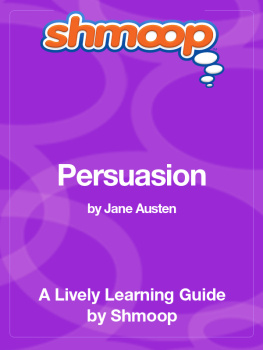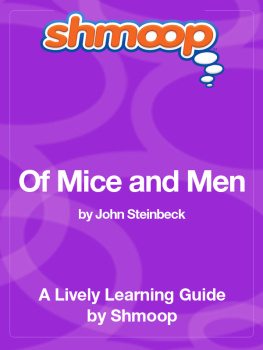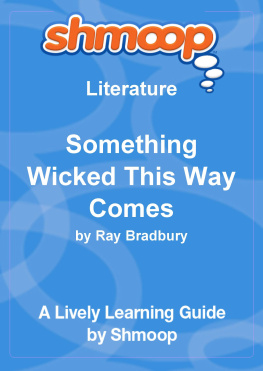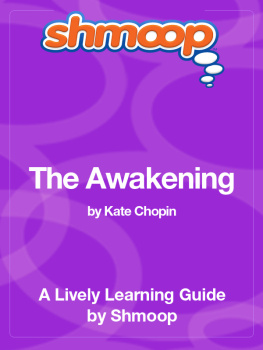
Table of Contents
In a Nutshell/Overview
The Turn of the Screw is easily one of the most influential ghost stories of all time. Not only does it appeal to those of us who like a good thrill, it is also a model for any aspiring writer of suspense. Henry James's text is famous for its lasting mysterious qualities; though the story originally appeared over a hundred years ago in 1898, it still stumps readers everywhere to this day. Its many confusing twists and turns have sparked debates between critics since its publication, and the story has been examined from all kinds of different angles - from psychoanalysis to literary criticism. Part of what's so fascinating about it is the fact that James himself never clearly came out and told readers what he intended them to believe, and it's this ambiguity that makes it one of this prolific author's most famous, talked about short stories.
Why Should I Care?
Alas - if only Henry James knew what he did for the future of horror movies when he sat down to write The Turn of the Screw. If only he'd known that generation upon generation of "creepy child" movies would take inspiration from his influential story and inflict themselves upon viewers everywhere. Would he still have written it if he knew how many celluloid descendants it would spawn?
Think about it: the legacy of The Turn of the Screw can be seen in practically every horror movie that involves children - and that, friends, is a lot of horror movies. Many of the classics of the genre focus not on adults tormented by evil spirits, but children - think Linda Blair and her spinning head in The Exorcist, the horrifying/adorable anti-Christ of The Omen, or the ghost-whispering son in The Shining. And don't even get us started on the seemingly endless Children of the Corn series (a whole town of scary children - armed!). The list goes on and on.
When you strip away all of the extra stuff Hollywood has added on to the original freaky child concept - take away the magic powers and the propensity for violence - what you're really left with is the idea that James presents to us so horrifyingly in his original story: what's truly scary about children is their illusion of innocence, and the idea that underneath those adorable masks, they could know more than we do. James gets right at this terrifying heart of the matter, and to this day, no matter how desensitized we are to the images of white-faced children crawling out of wells and whatnot, reading The Turn of the Screw is still a good, old-fashioned, genuinely terrifying experience.
What's Up With the Title?
This title's meaning is exposed on the very first page of the story; after hearing a ghoulish tale in which a child is menaced by some ghostly terror, someone suggests that the fact that the story's protagonist was a child is what gives a certain "turn of the screw" - that is, it tightens the dramatic tension. James' story offers a
second "turn" by introducing a horror story about
two children instead of one. This is an oddly mechanical way of describing the construction of a horror story - that is, a story that cranks the audience's stress level way up - and it keeps one of James's primary concerns, the craft of writing, in the back of the reader's mind at all times. The title also takes on a second meaning as we near the end of the story; the protagonist uses the phrase to describe taking control of her mental and emotional capabilities in preparation for a challenge.
What's Up With the Ending?
Hmm, good question - what
is up with this ending? Basically, the story leaves us right in the middle of things. If you're stumped by the rapid-fire sequence of events of the last chapter, don't worry - so are we, and so is everyone. Does the ghost of Peter Quint finally overwhelm Miles and kill him? Does the boy's shock and terror squeeze the life out of him? Does the Governess herself murder him? What? Huh? Why?!
James, being the rascal that he is, obviously intends for his readers to reach the end and be totally confused. The ambiguity of events and of the cause of Miles's death is clearly the key to understanding the actual
truth of the story - however, rather than give all of this away to us, James just
stops at the point of revealing everything.
This isn't just laziness, folks, it's genius. Think about it - by refusing to tell his readers what really happens to Miles (and therefore refusing to tell us if the Governess is trustworthy or not), he leaves an indelible imprint on the reader's mind. Instead of sitting back and being told a story, we are forced to engage with it, and to attempt to figure it out ourselves. While it may be grossly unsatisfying the first time you read it, trust us - the more you mull it over, the more fascinating (and
awesome!) this ambiguous, infuriating ending becomes.
Writing Style
Highly Structured, Carefully Constructed, Writerly
This story is a fascinating example of the difference between tone and style. While James adopts a highly emotional, somewhat melodramatic, and intensely personal tone in writing the Governess's narrative, he maintains a style that is tightly reined-in and highly structured. We get the feeling simultaneously that the narrator (the Governess) is gradually losing control, while the author (James) consistently works to create the
illusion of lost control.
James's amazing use of pacing and his masterful creation of suspense is evident most clearly at the end of the story. The chapters grow shorter and shorter, building to the final moment (Chapter Twenty-Four), in which Quint appears for the last time, and Miles unexpectedly expires - and then it just stops.
Upon a first read, the average reader is like, "
What? That's not what I was waiting for! Thanks a lot, Henry
Lame!" However, the more you ponder this ending, the more absolutely perfect it is - by not revealing anything at all, James allows his readers to keep mulling it over in their minds. Though at first it seems to be an incredibly flawed conclusion, perhaps more in keeping with the lack of control demonstrated in the Governess's voice, we ultimately see that James knew exactly what he was doing here, and that the whole story is constructed to culminate in this moment of shock and frustration.
Tone
Confessional, Direct, Biased
James cultivates a tone of honest, direct discourse in the Governess's manuscript; in so doing, he works to preserve the fictional frame of the story - remember, we're supposed to believe that this is a real-life manuscript that relates a real-life story. The tone he affects to make this scenario seem possible is extremely straightforward, with a kind of "tell-all" quality to it; we're obviously seeing the events through the highly biased eyes of the Governess. This accomplishes two very important things: first of all, James successfully creates a narrator who is lifelike and emotional; secondly, he constructs a narrator who is untrustworthy and questionable precisely
because she is so lifelike.
Narrator Point of View
First Person (principally narrated by the Governess)
We have two first person narrators throughout the course of the story. Our first narrator (who may or may not be Henry James himself, but either way, is certainly a stand-in for the figure of the author) is present only very briefly; he brings us up to speed on the origin of the story and its background info. He's notable because of his interest in the crafting of the story - through his eyes, we see the tale as a potential best seller, not necessarily as a simple story told by the fire on a winter's night.




















